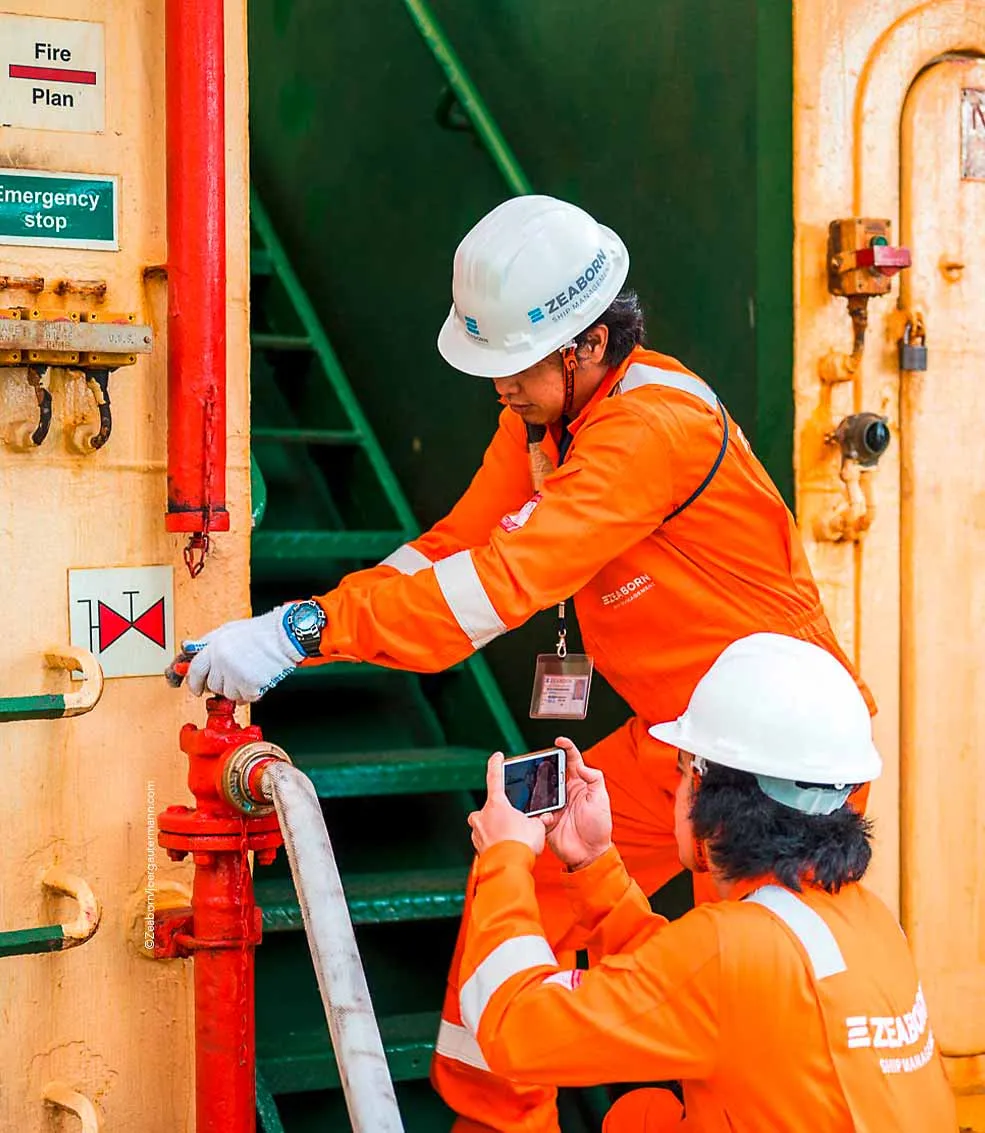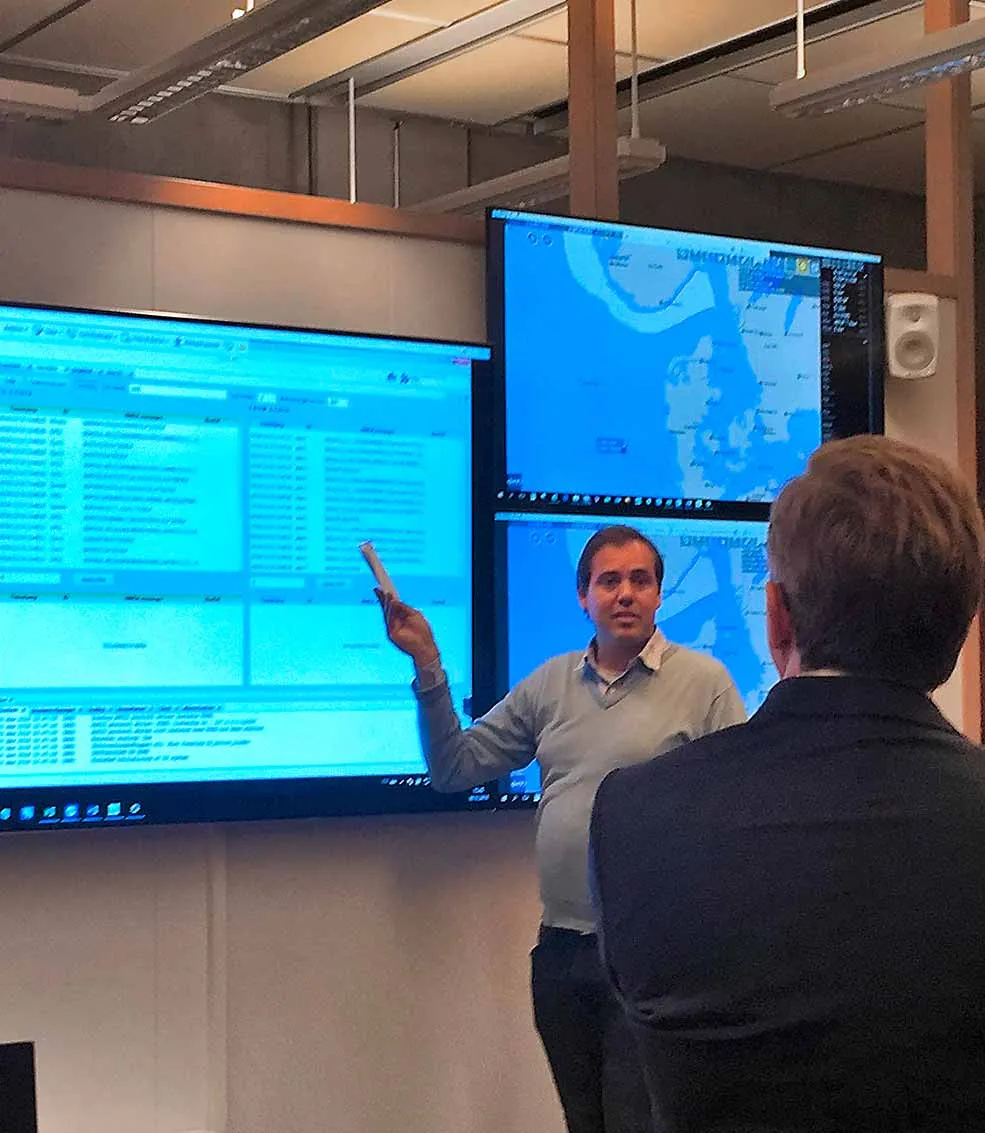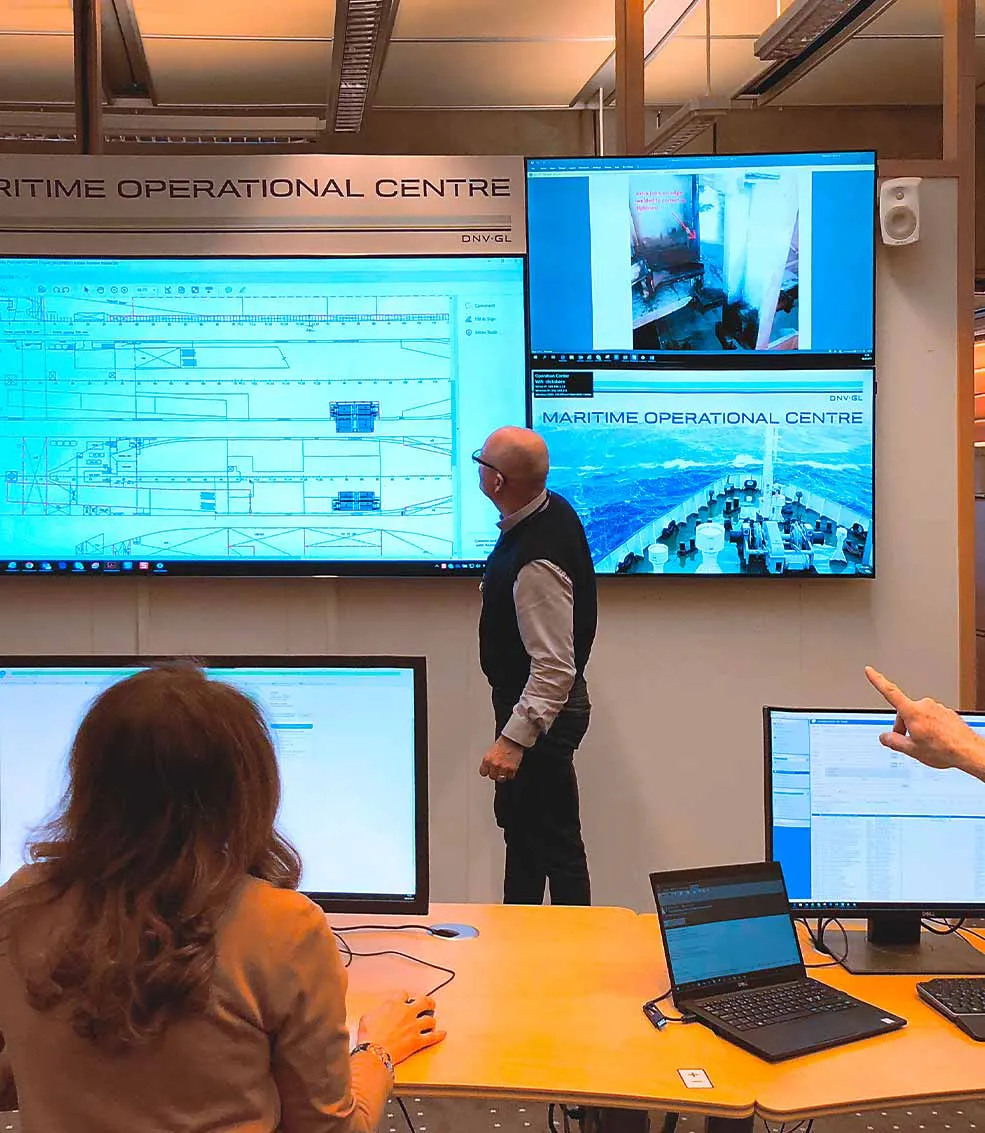Perfect combination
All DNV GL classed vessels are now able to utilize the possibility of remote surveys for some inspections. By using an online connection or video streaming link, a dedicated team of remote surveyors can provide support to vessels anywhere in the world.
“It’s all about doing things faster and more efficiently, but still doing them well,” says Stener Olav Stenersen, Head of Services at the DNV GL Maritime Operational Centre in Høvik.
Sending a surveyor to a vessel site costs time and money, and waiting time impacts the vessel’s operational availability. With travel time eliminated and waiting times reduced, remote surveys can conclude faster than traditional surveys, and the results can be shared immediately through DNV GL’s electronic certificate and documentation system.

The right expertise at the right time
Another advantage of remote surveying is access to a broader range of competencies, regardless of location. “Remote surveys allow us to apply expertise as needed from anywhere the experts are located,” Stenersen points out. And because the same remote survey teams review all types of cases, greater consistency of results is achieved, at same level of assurance as on-board surveys.
“So far, customers have been very happy with the results,” says Stenersen. And with the crew, owners and captains all eager to use the system, another added value feature has emerged: “The threshold for requesting assistance is lower because the turn around time can be quicker, and the logistical costs are lower.” DNV GL started offering remote surveys in October of 2018. In the spring of 2019 they are up to full speed, performing around 35 surveys a day, with 45 active surveyors. “The initial intention was to cover the smaller surveys that are needed in between periodical surveys, but our customers have been asking us to expand the scope,” Stenersen reports.
But even with growing enthusiasm from customers, not everything can be done remotely, explains Stenersen. “Some things are just too critical to determine without an expert being there to physically verify the situation,” he says. “Whether we can conduct a survey remotely is evaluated case by case. Here our on-board experience is critical for helping us to determine from the office whether a remote inspection is sufficient. In addition, some statutory items may require authorization by the flag administration to be done remotely.” Around 85 per cent of requests for remote surveys are accepted, with the remaining 15 per cent passed on to the on-site survey process.

Consolidating surveying competence
Most of DNV GL’s remote surveys are performed from the Maritime Operational Centre in Høvik, which opened in December 2018. Other units with remote survey experts are located in Hamburg, Singapore, Houston and Piraeus.
Senior surveying personnel have taken the lead in implementing the Høvik centre, Stenersen says. “They have long experience, and they know the work. We recognize the importance of bringing people in from the field and transitioning them into remote surveys. We will always require that hands-on experience.”
To complement experience from the field, the centre in Høvik also has access to specialists with technical expertise to support the surveys. “Access to technical experience and expertise is critical for verifying the results of the survey,” Stenersen confirms, dding that the secret to success lies in a combination of knowledge: “Experts work according to the book. They are used to looking at drawings and not steel. But with the practical perspective of the surveyors, we are able to strike the necessary balance.”

Establishing a role for remote surveying
A key goal with remote surveying is to minimize disruption to operations, says Stenersen. “Vessels can be held in ports for relatively minor issues. With easier access to surveying, we hope that the number of such cases can be lowered. The point is to try to find a solution, not to cause a problem. Class is part of the maritime ecosystem, and our goal is to keep vessels operative if technically possible.”
And while the maritime industry continues to adjust to a new digital reality, Stenersen and his team aim to keep remote surveying personal and human. “At the end of the day, whether it’s via a digital connection, over the phone or in person – it’s all about building and maintaining relationships. This is something we still believe in, even in the era of digital class. Whether it’s in person or remote, we are there to provide trust.”
Contact us

- Zeaborn by www.joergautermann.com
View image copyright information

